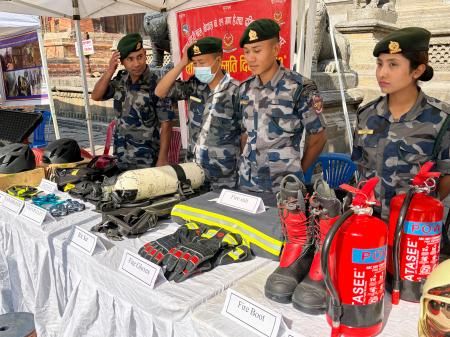Nepal Earthquake: Rebuilding & Disaster Preparedness – A Decade of Progress and Ongoing Challenges
The devastating 2015 Nepal earthquake, measuring 7.8 on the Richter scale, left an indelible mark on the nation. Thousands perished, countless more were injured, and historical landmarks crumbled. A decade later, Nepal continues its arduous journey of rebuilding and strengthening its disaster preparedness strategies. This article explores the progress made, the challenges that persist, and the crucial steps needed for a more resilient future.
Rebuilding Nepal: A Decade of Reconstruction
The earthquake's aftermath triggered a massive international aid response, focusing on housing reconstruction, infrastructure repair, and community support. While significant progress has been made in rebuilding homes, particularly in rural areas, challenges remain:
- Slow progress in heritage site restoration: The damage to Kathmandu's iconic temples and historical sites proved exceptionally difficult to repair, requiring specialized skills and meticulous craftsmanship. Restoring these cultural treasures continues to be a slow and complex process.
- Uneven distribution of aid: Inequities in aid distribution led to disparities in recovery rates across different regions and communities. Vulnerable populations, particularly marginalized groups, often faced significant hurdles in accessing support.
- Reconstruction quality concerns: In the rush to rebuild, some concerns have been raised regarding the quality of construction materials and adherence to building codes. Ensuring long-term structural integrity remains paramount.
Key Initiatives Driving Reconstruction:
- National Reconstruction Authority (NRA): The NRA played a central role in coordinating reconstruction efforts, disbursing funds, and overseeing rebuilding projects.
- Community-based reconstruction: Many reconstruction initiatives actively involved local communities, empowering them to participate in rebuilding their homes and infrastructure.
- International partnerships: Collaboration with international organizations and donor countries provided essential financial and technical assistance.
Strengthening Disaster Preparedness in Nepal
The 2015 earthquake highlighted the critical need for enhanced disaster preparedness. Nepal has made significant strides in this area, but continuous improvement is crucial:
- Improved early warning systems: Investments in seismic monitoring and early warning systems have improved the nation's ability to detect and respond to seismic activity.
- Building code enforcement: Strengthening building codes and enforcing their implementation are vital steps in mitigating future earthquake damage. This includes promoting earthquake-resistant construction techniques.
- Public awareness campaigns: Educating the public on earthquake preparedness, including evacuation procedures and safety measures, is vital for minimizing casualties.
- Disaster risk reduction strategies: Nepal is increasingly focusing on holistic disaster risk reduction strategies, encompassing community-based resilience building, land-use planning, and environmental protection.
Challenges in Disaster Preparedness:
- Limited resources: Nepal's limited resources pose a significant constraint to implementing comprehensive disaster preparedness measures.
- Geographical challenges: Nepal's mountainous terrain complicates disaster response efforts, making access to remote areas difficult.
- Institutional capacity: Strengthening institutional capacity within government agencies and local communities remains crucial for effective disaster management.
The Path Forward: A Resilient Nepal
Nepal's journey towards resilience requires sustained commitment and collaborative action. Prioritizing community engagement, enhancing institutional capacity, and investing in robust early warning systems are crucial steps. International support remains vital, focusing on long-term capacity building and knowledge sharing. A resilient Nepal demands not only rebuilding infrastructure but also fostering a culture of preparedness and community empowerment, ensuring that future generations are better equipped to withstand the challenges of natural disasters.
Keywords: Nepal earthquake, 2015 Nepal earthquake, Nepal earthquake reconstruction, disaster preparedness, disaster relief, earthquake resilience, building codes, Nepal reconstruction, seismic activity, early warning system, community resilience, Nepal disaster management.
Call to Action: Learn more about organizations supporting Nepal's recovery and disaster preparedness initiatives. You can find resources and ways to contribute through various international aid organizations and NGOs dedicated to Nepal's development.
